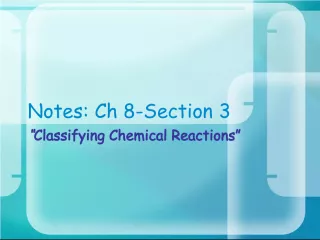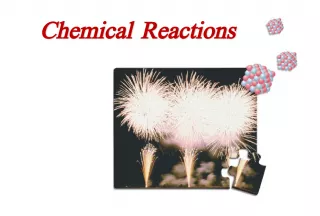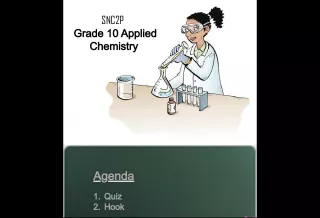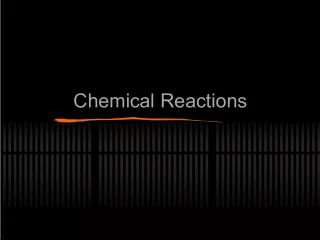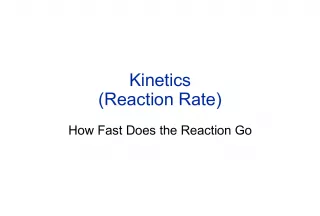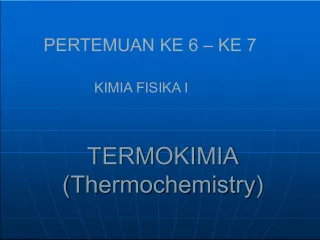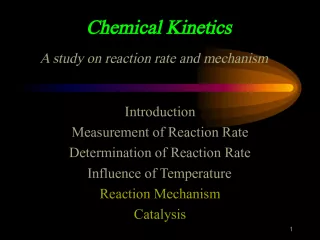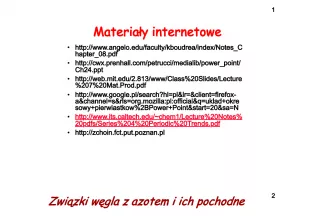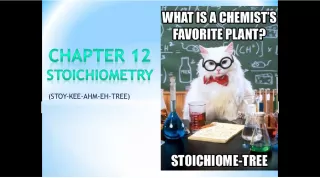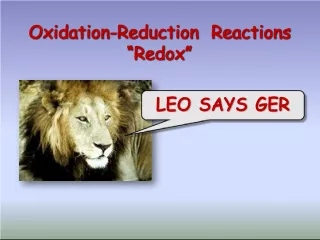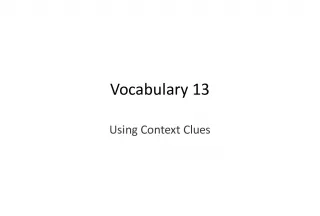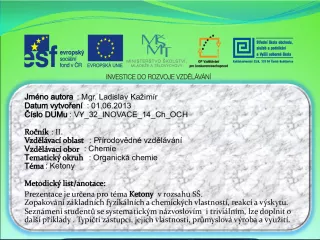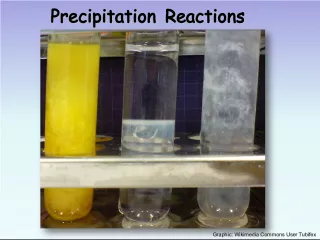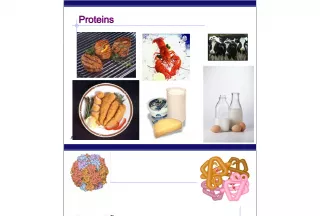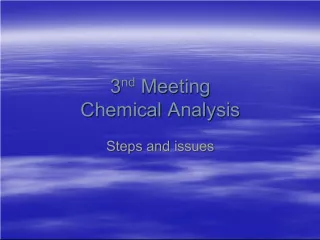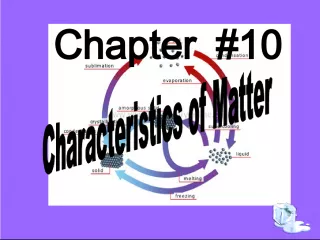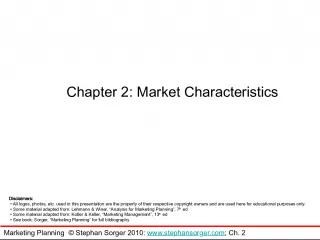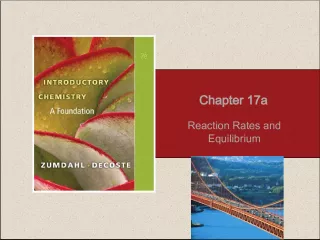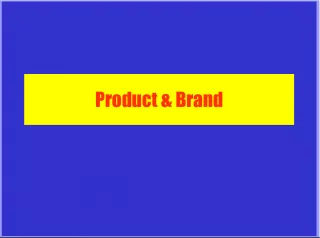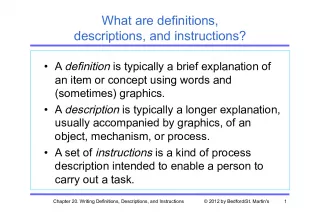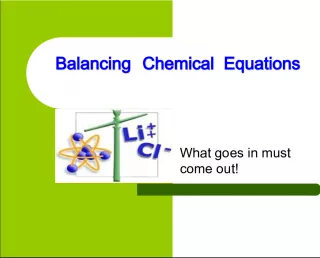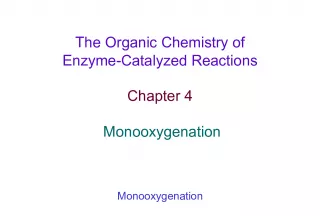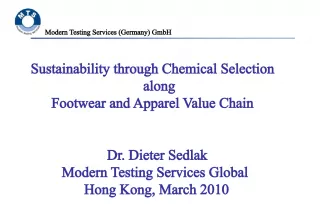Chemical Reactions: Clues and Definitions


This free PowerPoint template from www.brainybetty.com focuses on the topic of chemical reactions. The presentation covers two clues that indicate a chemical reaction is occurring: the evolution of heat
- Uploaded on | 1 Views
-
 arseniysmishko
arseniysmishko
About Chemical Reactions: Clues and Definitions
PowerPoint presentation about 'Chemical Reactions: Clues and Definitions'. This presentation describes the topic on This free PowerPoint template from www.brainybetty.com focuses on the topic of chemical reactions. The presentation covers two clues that indicate a chemical reaction is occurring: the evolution of heat. The key topics included in this slideshow are . Download this presentation absolutely free.
Presentation Transcript
Slide1Chemical ReactionsChapter 24
Slide2Free powerpoint template: www.brainybetty.com2 Clues that a Chemical Reaction is Occurring • Evolution of heat or light • Formation of a gas • Formation of a precipitate • Color change • Some reactions have more than one clue!!
Slide3Free powerpoint template: www.brainybetty.com3 Chemical Reactions • Defined : a change in which one or more substances are converted into new substances • Reactants = substances that react • Products = new substances formed
Slide4Free powerpoint template: www.brainybetty.com4 • Chemical Equations are written in the following format: • A + B --> C + D (reactants) (products)
Slide5Free powerpoint template: www.brainybetty.com5 Characteristics of Chemical Equations • 1)The equation must contain the correct formulas for both the reactants and products!! • Remember that some elements exist as diatomic molecules: HOFBrINCl
Slide6Free powerpoint template: www.brainybetty.com6 Characteristics of Chemical Equations • Other exceptions- phosphorus is P 4 and sulfur is S 8. • All other elements have no subscripts because they do not exist as molecular compounds in nature.
Slide7Free powerpoint template: www.brainybetty.com7 Characteristics of Chemical Equations • 2) Law of conservation of mass • Antoine Lavoisier , a French chemist, developed the law of conservation of mass in his work with mercury.
Slide8Free powerpoint template: www.brainybetty.com8 • Law of conservation of mass states that the mass of the reactants equals the mass of the products. • Lavoisier determined this by noting the increase in mass of a metal after being heated in the presence of oxygen.
Slide9Free powerpoint template: www.brainybetty.com9 Significance of the Law of Conservation of Mass • The same number of atoms must be on each side of a balanced and correct chemical equation. • To equalize or balance equations, coefficients are placed in front of a formula to specify the relative number of moles of that substance.
Slide10Free powerpoint template: www.brainybetty.com10 Writing Chemical Equations • A chemical equation is a way to describe a chemical rxn using chemical formulas and other symbols. • This shorthand method makes it easier for chemists to communicate.
Slide11Free powerpoint template: www.brainybetty.com11 Symbols Used in Writing Chemical Equations • --> means produces • + plus • (s) solid • (l) liquid • (g) gas • (aq) aqueous • Heat- reactants are heated • Light- reactants are exposed to light • Double arrow means reversible rxn
Slide12Free powerpoint template: www.brainybetty.com12 Unit Managers • Numbers to the left of the chemical formulas are called coefficients , which represent the number of moles of each substance that are taking part in the reaction.
Slide13Free powerpoint template: www.brainybetty.com13 Balancing Equations • A balanced equation has the same number of atoms on each side of the equation. • Treat polyatomic ions as one unit.
Slide14Free powerpoint template: www.brainybetty.com14 Let’s do an Example • HgO (s) heat --> Hg (l) + O 2 (g) • How can we balance the equation? 2 2
Slide15Free powerpoint template: www.brainybetty.com15 Choosing Coefficients • Mostly a trial-and-error process, but it gets easier with practice. • Let’s try another example: • Iron metal plus oxygen produces iron(II) oxide
Slide16Free powerpoint template: www.brainybetty.com16 • Fe (s) + O 2(g) --> FeO (s) • This is the equation that you should have before it is balanced with coefficients. • 2 Fe (s) + O 2(g) --> 2 FeO (s) • This is the equation that you should have once it is balanced.
Slide17Free powerpoint template: www.brainybetty.com17 Classifying Chemical Reactions • 5 main categories: • Synthesis Rxns • Combustion Rxns • Decomposition Rxns • Single Replacement Rxns • Double Replacement Rxns
Slide18Free powerpoint template: www.brainybetty.com18 Synthesis Reactions • Aka: composition reactions • Two or more substances combine to form a new substance. • Example: hydrogen burns in oxygen to form water.
Slide19Free powerpoint template: www.brainybetty.com19 General scheme of a synthesis reaction • A + X --> AX • There are a few basic types of synthesis reactions: • 1) reaction of metals with oxygen to produce oxides • 2 Mg (s) +O 2(g) --> 2MgO (s)
Slide20Free powerpoint template: www.brainybetty.com20 Types of synthesis reactions • 2) reactions of metals with sulfur to produce sulfides • 16 Rb (s) + S 8(s) --> 8Rb 2 S (s) • Non-metals can also combine with oxygen and sulfides to form compounds.
Slide21Free powerpoint template: www.brainybetty.com21 Types of Synthesis Reactions • 3) Reaction of metals with halogens (group 17 nonmetals) • Sr (s) + Br 2(l) --> SrBr 2(s) • 4) Synthesis reactions with oxides • These oxides react with water to form metal hydroxides. • CaO (s) + H 2 O (l) --> Ca(OH) 2(s)
Slide22Free powerpoint template: www.brainybetty.com22 Combustion Reactions • Type of synthesis reaction • Characterized by burning. • Occurs when a substance reacts with oxygen to produce energy in the form of light and heat.
Slide23Free powerpoint template: www.brainybetty.com23 Example of combustion reaction • Propane + oxygen --> carbon dioxide + water • C 3 H 8(g) + 5O 2(g) --> 3CO 2(g) + 4 H 2 O (g) Propane combustion!!!!
Slide24Free powerpoint template: www.brainybetty.com24 Decomposition Reactions • One substance breaks down or decomposes into two or more substances. • Many require the use of heat, light or electricity.
Slide25Free powerpoint template: www.brainybetty.com25 General scheme of Decomposition reactions • AX --> A + X • Examples: • 1) Decomposition of binary compounds • Electrolysis of water is an excellent example. Water is split into hydrogen and oxygen by adding an electric current. • See if you can write the balanced equation for the electrolysis reaction described above!
Slide26Free powerpoint template: www.brainybetty.com26 Types of Decomposition reactions • 1) Decomp of metal carbonates produces metal oxide and carbon dioxide gas • CaCO 3(s) --> CaO (s) +CO 2(g) • 2) Decomp of metal hydroxides (except group 1 metals) yield metal oxides and water • Ca(OH) 2(s) --> CaO (s) + H 2 O (g)
Slide27Free powerpoint template: www.brainybetty.com27 Types of Decomposition Reactions • 3) Decomp of metal chlorates to produce a metal chloride and oxygen • 4) Decomp of some acids into nonmetal oxides and water
Slide28Free powerpoint template: www.brainybetty.com28 Single Displacement Reactions • When one element replaces another in a compound. • Many of these reactions take place in solution. • General scheme: A + B C --> A C + B or Y + B C --> B Y + C • Silver nitrate and copper metal form copper(II) nitrate and silver metal.
Slide29Free powerpoint template: www.brainybetty.com29 Tips for single replacement reactions • When predicting products, remember that metals will always be first in a chemical formula or they will be by themselves. • Also remember that nonmetals or polyatomic ions will be second in a chemical formula , NEVER first!
Slide30Free powerpoint template: www.brainybetty.com30 Types of single replacement rxns • 1) Replacement of one metal by another • 2) Replacement of hydrogen in water by a metal to produce metal hydroxides and hydrogen gas
Slide31Free powerpoint template: www.brainybetty.com31 Types of single replacement rxns • 3) Replacement of hydrogen in an acid by a metal to produce a salt and hydrogen gas • 4) Replacement of halogens
Slide32Free powerpoint template: www.brainybetty.com32 Double Displacement Reactions • The positive ion of one compound replaces the positive ion from the other compound, forming two new compounds.
Slide33Free powerpoint template: www.brainybetty.com33 General Scheme of Double replacement rxns • A X + B Y --> A Y + B X • Types of Double Replacement Rxns: • 1) Formation of a precipitate
Slide34Free powerpoint template: www.brainybetty.com34 More double replacement rxns • 2) Formation of a gas • 3) Formation of water
Slide35Free powerpoint template: www.brainybetty.com35 Acids • These were recognized as a distinct class of chemicals due to the following properties: • 1) Aqueous solutions have a sour taste. • 2) Acids change the color of acid-base indicators, like litmus paper or pH paper. • 3) Some acids react with metals to form hydrogen gas. • 4) Acids react with bases to produce salts and water. • 5) Some acids conduct electric current.
Slide36Free powerpoint template: www.brainybetty.com36 Bases • These are the properties of bases: • 1) Aqueous solutions of bases taste bitter. • 2) Bases change the color of acid-base indicators. • 3) Dilute aqueous solutions of bases feel slippery. • 4) Bases react with acids to produce salts and water. • 5) Bases conduct electric current.
Slide37Free powerpoint template: www.brainybetty.com37 Acid-Base Reactions • When strong acids and bases react, the products are ALWAYS a salt and water! • An example of this is hydrochloric acid and sodium hydroxide (from double replacement reactions example). • Acids and bases will be a primary focus in SPAN/AP chemistry.
Slide38Free powerpoint template: www.brainybetty.com38 Acid and Base Strength • The strength of an acid or base depends on how well the ions separate in aqueous solution. • The more they separate, the stronger they are. • The pH scale indicates how strong the acid or base is by indicating how much hydrogen ion is in the solution.
Slide39Free powerpoint template: www.brainybetty.com39 The pH scale • This scale usually runs from 0-14. • A ranking of 0-6 is acidic, 7 is neutral and 8-14 is basic.
Slide40Free powerpoint template: www.brainybetty.com40 Oxidation • Review of rules for assigning oxidation numbers. • 1) The oxidation number of any uncombined element is zero. ie: Zn • 2) The oxidation number of a monatomic ion equals the charge on the ion… Group 1=+1 and so on… • 3) Oxidation number of H is +1 in most cases, unless it is combined with a metal…then it is -1. • 4) The sum of the oxidation numbers of all atoms in a neutral compound is zero.
Slide41Free powerpoint template: www.brainybetty.com41 Oxidation Reactions • Defined as reactions in which ions or atoms of an element experience an increase in oxidation state. • Example: • In oxidation reactions, electrons are lost so the oxidation state becomes greater (more positive).
Slide42Free powerpoint template: www.brainybetty.com42 Factors that Affect the Rates of Chemical Reactions • 1) Temperature- an increase in temperature may cause the rate of the reaction to speed up and a decrease in temperature may cause a reaction to slow down • Why? Increasing the temperature causes the kinetic energy of the particles to increase, which • increases the collisions of the particles
Slide43Free powerpoint template: www.brainybetty.com43 Factors that Affect the Rates of Chemical Reactions • 2) Surface area- the rate of reaction depends on the area of contact for each substance • An increase in the surface area will increase the rate of heterogeneous reactions- which are reactions that involve reactants in two different phases. ie: solids and liquids
Slide44Free powerpoint template: www.brainybetty.com44 Reduction Reactions • Defined as reactions in which the ions or atoms of an element experience a decrease in oxidation state. • Example: • In reduction reactions, electrons are gained so the oxidation number decreases (becomes more negative).
